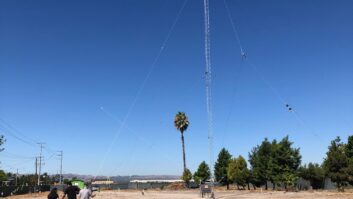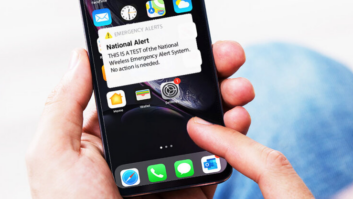The author is membership program director of the National Federation of Community Broadcasters. NFCB commentaries are featured regularly at www.radioworld.com.
The news reports following California’s devastating Camp Fire have been heartbreaking. In the wake of another wildfire to sweep across the state, residents have lost everything. Whole towns have been literally wiped out by flames. Officials estimate the destruction may take years to repair.
Some community radio stations were severely affected by the state’s recent wildfires. Even as they struggled to cope with the damage and stress, the story of one that sprang into action may inspire others if such disasters visit their regions.
[Read: Community Broadcaster: Be Appealing]
In the instance of KVMR, the radio station took to the airwaves and raised $43,000 in 11 hours to help support the basic needs of Camp Fire survivors. It was the station’s biggest fundraising day in its history, and the cause could not have been more critical.
The excellent Nevada City team at KVMR has always been community-oriented. The station is a fixture at many local events, offers tons of live broadcasts, and serves an essential resource come election time. At a time of tremendous need, the station should receive high praise for its campaign. May it embolden others who face calamity too.
Noncommercial radio has long been prevented from fundraising for third parties such as shelters and other fellow nonprofits. In fact, the rule has been in place so long that many people still believe stations cannot do it. In truth, the prohibition on stations raising money for third parties was lifted last year.
As you may know, noncommercial radio stations could previously get a waiver to do fundraising during emergencies and disasters. However, as of November 2017, stations that do not receive Community Service Grants are allowed to engage in third-party fundraising without obtaining a waiver, so long as it does not occupy more than one percent of your total airtime, among other regulations.
Community radio stations should further bear in mind the documentation required for these enterprises. Public file disclosures require the station explain the third-party organization to receive the money raised; the type of fundraising activity (i.e. on-air drive, etc.); a description of the specific cause, if any, supported by the activity; the date/time and length of time of activities; among other matters. Your station will also have to document your role in collecting money and the approximate amount raised. Any billing back to the third party, such as to cover administrative costs, must further be documented.
The Federal Register has an overview, which was issued around the change. Credit FCC Chair Ajit Pai, who ushered in a suite of reforms that year. You can review the FCC’s assessment here in PDF format.
There are many good reasons noncommercial radio stations should use their muscle to help local nonprofits. Not only can funds boost matters of need, but a station benefits in being seen as responsive and sensitive to what’s happening around them. Nevertheless, there are many reasons to be cautious as well.
Because you can do it does not mean stations should engage in third-party fundraising often. When the shift in regulations were initially proposed, many noncommercial broadcasters opposed changes due to a variety of concerns, especially mission and diluting stations’ ability to raise operational money.
Any radio station considering third-party fundraising may do so selectively, because casual listeners may not distinguish these exercises from your usual pledge drive. For community outlets particularly, where thin budgets mean a struggling on-air marathon can make a difference, the stakes are only raised.
For nonemergency issues, there might also be a good conversation about how a radio station might best serve its community. From experience, I know many station boards and leaders are compassionate people, as we all seek to be. It is easy to see a crisis locally and want a radio station to be involved. However, a solution that may get far more traction is focused attention and smart coverage rather than money. Investing resources in reporting, community engagement to get residents talking about a subject, and using its platforms to raise the issues on the civic agenda may in truth do far more good.
A stellar example of media in action might be community station WRFI’s recently announced Loneliness Project, a series on mental health and college students. The radio station has done similar series, including ones on local housing and food insecurity. Such journalism is mission-centered and reflects to listeners the promise of noncommercial media. Many grants exist for this sort of work, and should not be overlooked.
All these opportunities, though, should not deter your community radio station from stepping into the breach when you are needed, as KVMR recently did.
[Want more information like this? Subscribe to our newsletter and get it delivered right to your inbox.]







